When budgets are tight and targets keep rising, guessing is expensive. A three-platform ad test—run across Meta, Google, and LinkedIn—lets you prove which channel, audience, and creative angle can deliver the lowest CAC and the strongest pipeline. This blueprint shows how SohoMediaHub executes a four-week, data-tight pilot that turns hypotheses into scalable winners.
Week 0 — Set the Guardrails (Tracking, Offer, Learning Agenda)
Goal: Make every click attributable and every decision repeatable.
- Tracking & taxonomy: Implement GA4 + platform pixels, define conversions, and lock a clean UTM governance (source/medium/campaign/ad).
- Offer & landing: Pick one primary offer (demo, consult, free tool, or lead magnet) and ship a single, fast landing experience aligned to the promise.
- Learning agenda: Write 3–5 hypotheses you’ll test (e.g., “Problem-first creative lowers CPL by 20%” or “Title-based targeting on LinkedIn yields higher SQL rate”).
- Budget & pacing: Pre-agree a daily budget per platform and a kill/scale rule (e.g., pause any ad set >1.5× target CPL after 3k impressions).
Need help with the foundation? See our Performance Marketing approach here: Services.
Week 1 — Build the Matrix (Audiences, Keywords, Creative Angles)
Goal: Create structured variety—without chaos.
- Audiences (Meta/LinkedIn):
- Meta: interest + lookalike (seeded from recent buyers or high-intent visitors).
- LinkedIn: job title, function, seniority, industry; add a retargeting segment.
- Keywords (Google):
- One tight Exact ad group for high-intent terms, one Phrase group for discovery, one Brand group (if applicable). Negative keywords from day one.
- Creative angles (all platforms):
- Problem-first (“Stop losing leads to slow pages”).
- Outcome-first (“Cut CPL by 32% in 30 days”).
- Proof-first (logos, stats, testimonial clips).
- Asset plan: 6–9 ad variants across platforms (static, short video/UGC, and copy lengths S/M/L). Each variant maps to a clear angle and CTA.
Week 2 — Launch & Stabilise (Spend for Signal, Not for Ego)
Goal: Gather directional data quickly—without over-reacting.
- Bids & budgets: Start on recommended bidding with a uniform split (e.g., 40% Google, 35% Meta, 25% LinkedIn).
- Early guardrails: Pause obvious underperformers (sub-0.5% CTR on LinkedIn, sub-0.8% CTR on Meta, QS < 6 on Google) after reasonable reach.
- Landing page hygiene: Check scroll depth, form errors, and load time. Fix friction before pumping spend.
- Daily ritual:
- Shift 10–20% budget from the bottom quartile to the top quartile.
- Harvest search terms; add negatives.
- Keep one control asset live on each platform for a baseline.
Week 3 — Optimise What Works (Tight Loops, Smarter Bets)
Goal: Reduce CPL/CAC while protecting signal quality.
- Creative sprints: Clone top ads and vary hook, headline, and first 3 seconds of video. On Google, test 2–3 new RSAs with pinning strategies.
- Audience refinement: Narrow LinkedIn by function/seniority combos that show higher lead-to-SQL. On Meta, create a lookalike from fresh converters.
- Budget reallocation: Move up to 30% of daily budget into the winning angle/channel. If Google Exact is carrying results, expand the cluster; if Meta retargeting drives cheap wins, feed it with more top-funnel reach.
- CRO collaboration: Tighten the landing page (social proof above fold, shorter form, reassurance copy near CTA, FAQ for objections).
Week 4 — Decide: Scale, Pivot, or Kill (Board-Ready Evidence)
Goal: Present a simple, trusted readout and a clear next step.
- Unified dashboard: One view with CPC, CTR, CPL, SQL rate, CAC/ROAS, and pipeline value by platform → audience/keyword → angle.
- Attribution sanity check: Compare platform-reported conversions with GA4 and CRM. Investigate gaps before scaling.
- Winner profile: Document the winning combination (e.g., “Google Exact + Outcome angle + consult offer”) and the expected unit economics at scale.
- Next sprint: Decide whether to (a) scale the winner, (b) test an adjacent offer, or (c) kill a channel temporarily and reinvest in what’s working.
Want us to run the sprint and hand you the playbook? Start here: Contact SohoMediaHub.
Channel-by-Channel Nuance (What to Watch)
- Google Ads: Intent first. Protect quality score, prune queries daily, and make landing copy match keyword clusters.
- Meta Ads: Creative is the lever. Refresh hooks weekly; stack social proof; use broad + lookalikes; separate prospecting vs. retargeting.
- LinkedIn Ads: Pay for precision. Lead quality often offsets higher CPL. Rotate offers (demo vs. guide vs. event) to avoid fatigue.
Your Pilot Deliverables (What “Done” Looks Like)
- Audit & learning agenda with hypotheses and success metrics
- Angle × Audience/Keyword × Asset matrix (trackable naming)
- Clean tracking stack (GA4, pixels, UTMs, conversion taxonomy)
- Weekly optimisation log and final readout with channel and creative winners
- 90-day scale plan with budget scenarios and expected CAC/ROAS
Why This Works
The three-platform ad test removes guesswork by forcing structured variety and tight feedback loops. Instead of debating preferences, you compare Meta vs. Google vs. LinkedIn on the same offer, same timeframe, and the same reporting rules. The outcome isn’t a “campaign”—it’s a repeatable acquisition system you can scale with confidence.
- Learn how we approach paid, SEO, content, and OOH together: Services
- Meet the team behind the process: About
- Ready to blueprint your pilot? Contact Us or return to the Homepage

Fusce condimentum enim vestibulum libero gravida, ut accumsan quam bibendum. Curabitur gravida est sit amet cursus.
Fusce condimentum enim vestibulum libero gravida, ut accumsan quam bibendum. Curabitur gravida est sit amet cursus.